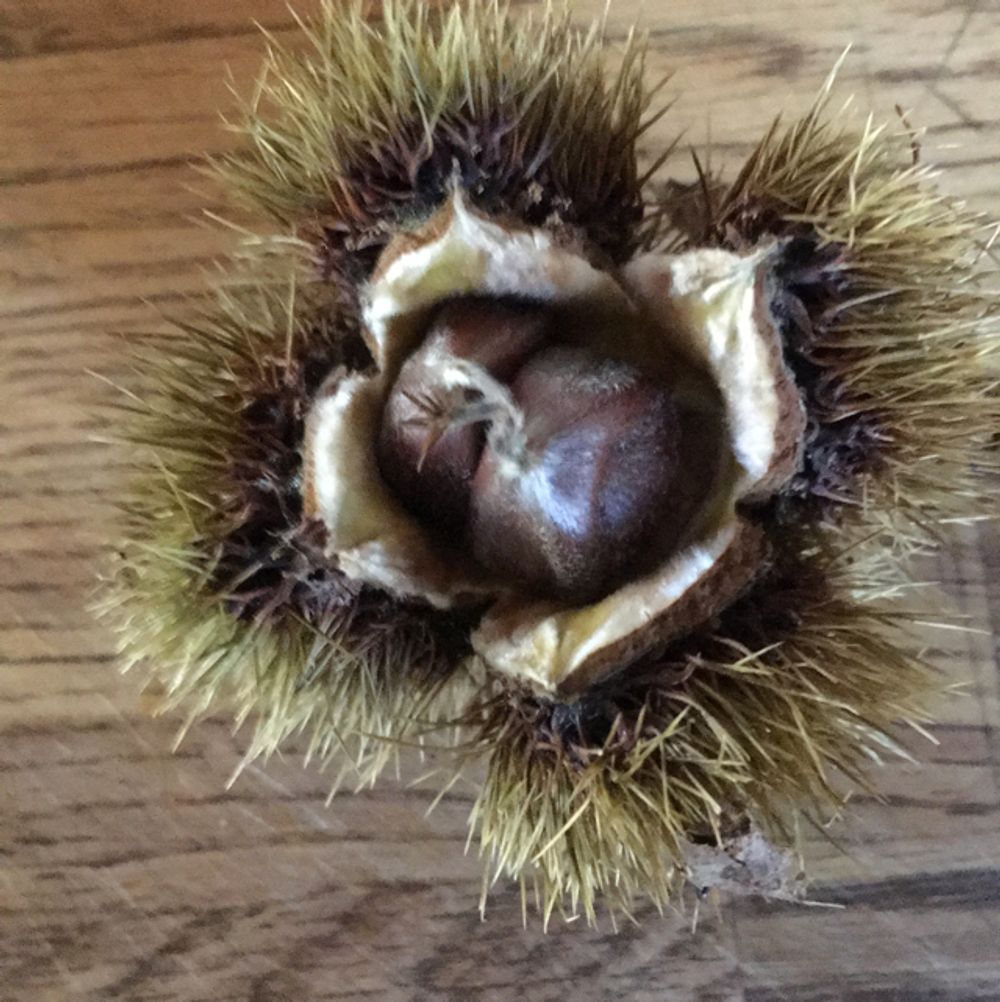Chestnut
(Castanea)

Description
The chestnut (Castanea) group is a genus of eight or nine species of deciduous trees and shrubs in the beech family Fagaceae, native to temperate regions of the Northern Hemisphere. Chestnut trees are of moderate growth rate (for the Chinese chestnut tree) to fast-growing for American and European species] Their mature heights vary from the smallest species of chinkapins, often shrubby, to the giant of past American forests, C. dentata that could reach 60 m. Between these extremes are found the Japanese chestnut (C. crenata) at 10 m average;[Note 1] followed by the Chinese chestnut (C. mollissima) at about 15 m, then the European chestnut (C. sativa) around 30 m. The fruit is contained in a spiny (very sharp) cupule 5–11 cm in diameter, also called "bur" or "burr". The burrs are often paired or clustered on the branch[19] and contain one to seven nuts according to the different species, varieties, and cultivars. Around the time the fruits reach maturity, the burrs turn yellow-brown and split open in two or four sections. They can remain on the tree longer than they hold the fruit, but more often achieve complete opening and release the fruits only after having fallen on the ground; opening is partly due to soil humidity The fruit can be peeled and eaten raw, but it can be somewhat astringent, especially if the pellicle is not removed. Another method of eating the fruit involves roasting, which does not require peeling. Roasting requires scoring the fruit beforehand to prevent explosion of the fruit due to expansion. Once cooked, its texture is slightly similar to that of a baked potato, with a delicate, sweet, and nutty flavour. This method of preparation is popular in many countries, where the scored chestnuts may be cooked mixed with a little sugar.
Taxonomic tree:







